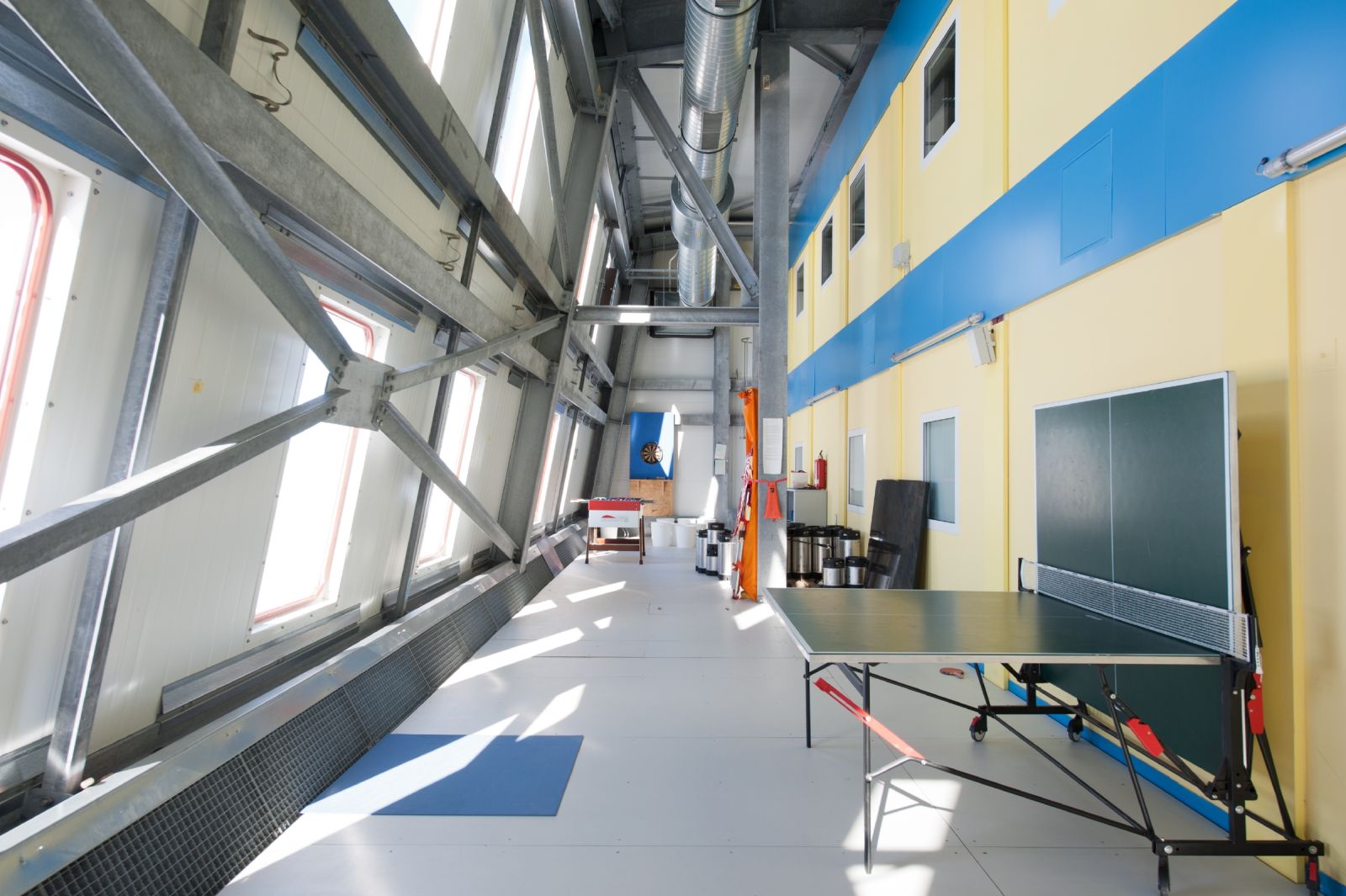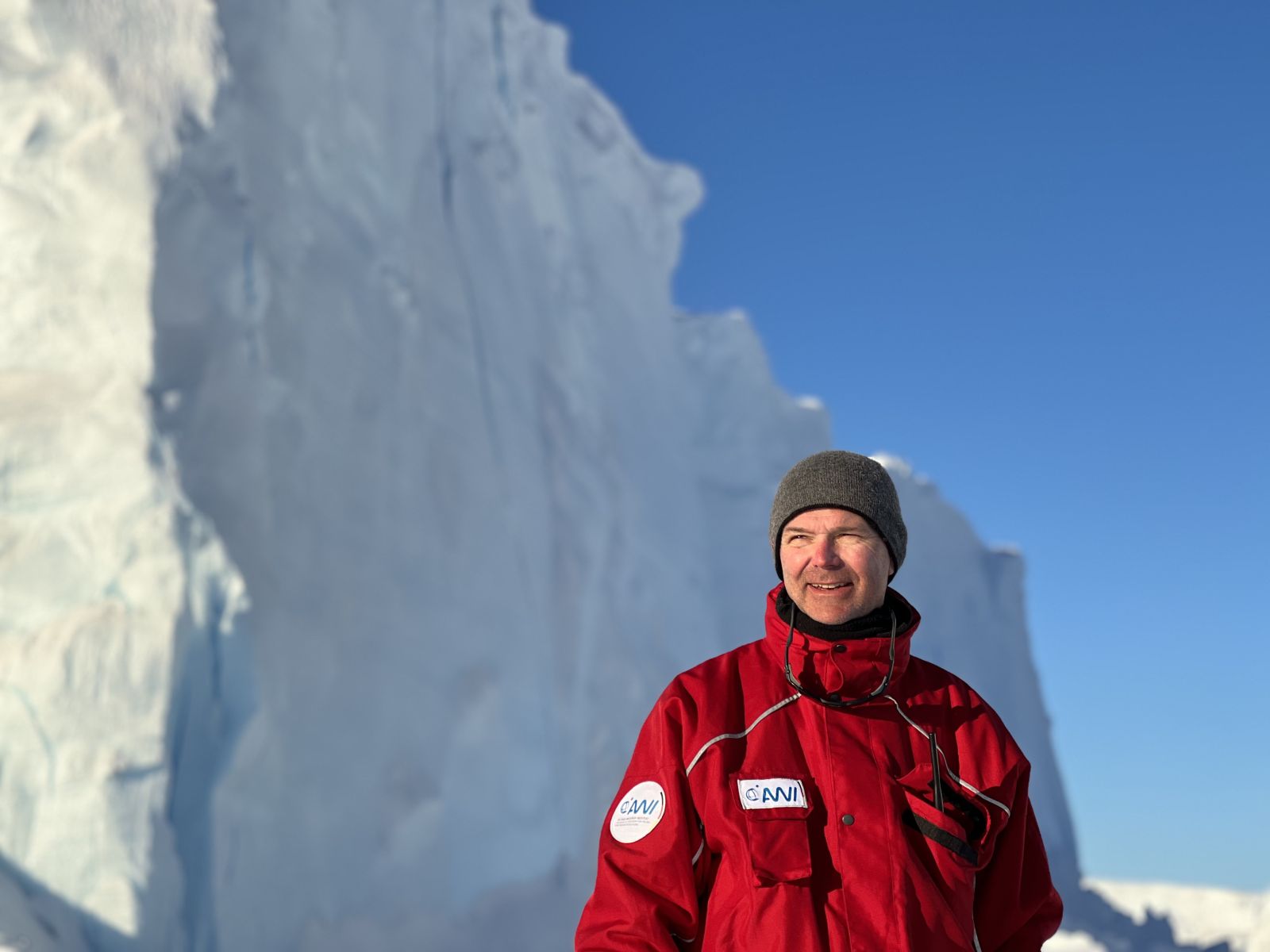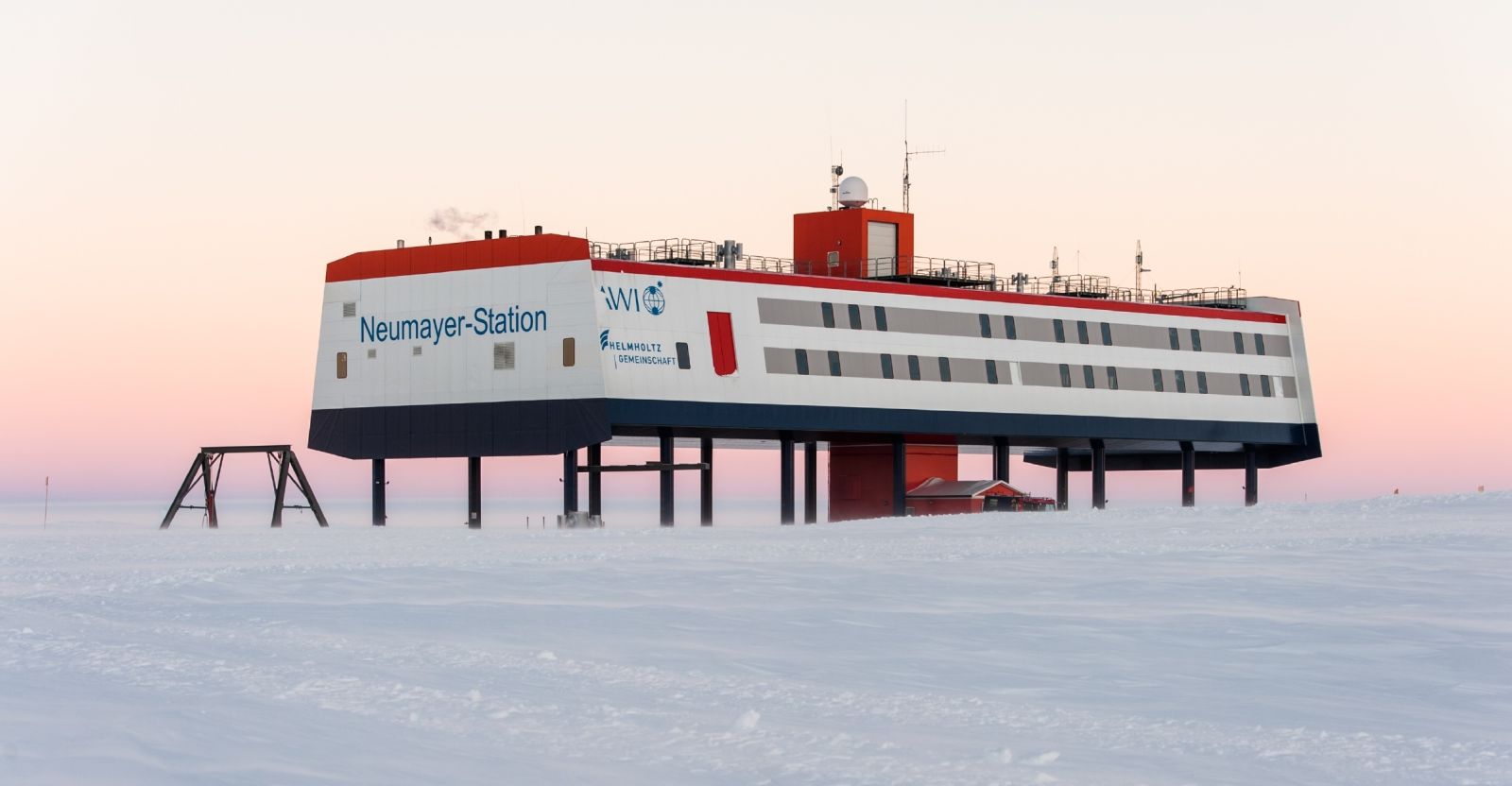Energy for the Frozen End of the Earth: Structural health monitoring secures wind power in Antarctica
70°40' south, 8°16' west – a point on the edge of the Antarctic. It is located in the Ekström Ice Shelf in Atka Bay in the northeastern Weddell Sea. This place, with its surreal-sounding name, is an epicenter of German polar research and an extraordinary site for harnessing wind power.

The continent of Antarctica, the land area of Antarctica, is almost 5.1 million mi² (13.2 million km²) in size, making it about a quarter larger than the United States. The lowest temperature ever recorded at this point on Earth is minus 122°F (minus 50.2°C), and the wind whistles at up to 93 mph (150kph).
One might think that renewable energies have no place in the frozen wasteland. However, Antarctic research shows that environmentally friendly energy can be generated even under the most inhospitable conditions.
A safe and warm place for research
The ice crunches underneath his shoes as Peter Köhler inspects the huge hydraulic props under the station. As a graduate engineer and technical coordinator of Neumayer Station III, he oversees the operations of the research station run by the Alfred Wegener Institute, Helmholtz Center for Polar and Marine Research (AWI).
The base for German Antarctic research is a building on a platform above the snow’s surface. Technicians regularly raise the station with a hydraulic lifting device to compensate for the annual snowfall of about one meter. In this way, the facility is always about six meters above the ice.

Inside a protective shell, the platform contains more than 100 containers with different functions on two levels. The temperature is kept at 68°F (20°C) to provide a comfortable working and living environment for up to 60 people. A reliable energy supply is crucial for survival.
Fossil fuels were the backbone
Until now, three diesel-powered combined heat and power (CHP) units, an emergency CHP unit and a 30 kW horizontal-axis wind turbine have guaranteed the energy supply of Neumayer III. The three diesel generators, each with an output of 160 kW, previously consumed between 94,000 and 134,000 gal (355,828 and 507,245 kg) of diesel fuel per year, releasing around one million tons of carbon dioxide into the atmosphere in the name of research. However, that is changing.
In line with the Antarctic Treaty for the protection of the environment, the proportion of renewable energy in the station's energy balance is to be significantly increased. The conversion to increased use of wind and solar energy is planned to take five years — not least because of the logistical challenges.
-AWI%2BAdobe%20Stock_bearb_EN.jpg) A logistical challenge
A logistical challenge
Every year in late summer, the icebreaker Polarstern departs from Bremerhaven (Germany) on an Antarctic expedition and transports all the equipment to the other side of the world. The time available is extremely limited: all work must be carried out during the so-called summer season, which is between November and February. During the polar winter, there is an icy polar night.
Many of the measures are of a pioneering nature. This includes to the first vertical-axis wind turbine. It supports the station's CHP with a renewable output of up to 50 kw, complementing the old horizontal turbine, which had to contend with many technical problems during extreme weather conditions.
Vertical instead of horizontal
The new wind turbine is a H-wind generator with a vertical axis of rotation. Its advantage: the system can effectively use the wind from all directions without the rotor blade having to be adjusted or the nacelle having to be repositioned. The rotor diameter is 32.8 ft (10m). Electricity is generated at low wind speeds of 4.5 mph up to stormy 56 mph. (2 - 25m/s)
The annual snowfall is an enormous challenge, which was solved by a star-shaped foundation grounded in the snow. The wind turbine weighs so little, with a total of around 8 tons, that it can be lifted by a slewing crawler crane each year by the amount of snow accumulation. With each elevation, the foundation sinks deeper into the firn snow. To compensate for this, standardized elevation elements are inserted between the conically tapering tower element and the star-shaped foundation.
A second wind turbine of the same design was built a few weeks ago. A third turbine is in the planning stage. In addition, two more plants can optionally be built later, so that five wind power plants would provide a capacity of 50 kW each.
Measurement data is used for subsequent plants
A Structural Health Management (SHM) system is helping to ensure that German polar researchers in Antarctica don't run out of eco-power. The SHM system is attached to the tower of the first new wind turbine, and it has been in operation for more than a year now.

Braving the cold
Developed for the cold, the SHM system systematically collects measurement data on natural frequency, inclination, and acceleration RMS values. The measurement technology installed outdoors is specially designed for continuous operation at extreme temperatures, withstanding peaks from -40°F to 158°F (-40°C to 70°C).
The sensor data from the SHM system in Antarctica is first transmitted via Ethernet link to the polar station's intranet and then later sent by satellite to Europe, where it is systematically evaluated by a specialized company.
The data from the first year of operation showed the system is stable and reliable. No major changes are necessary, Peter Köhler explains.
Façade to be clad with solar panels
The complex energy concept of Neumayer Station III extends much further than just to the wind turbines. In the future, the station's façade will also play an important role in the generation of renewable energy. It will be equipped with photovoltaic elements. The modules are expected to deliver 53 kWp. Given the local wind conditions, this is also a tricky task. In addition, a battery storage unit with a capacity of 500 kW/h will be installed to store the energy. There will also be a thermal storage unit: a water storage tank with a capacity of 338,140 fl.oz (10m3). Last but not least, the existing CHP units will be replaced by two large and two smaller new CHPs.

A last view from a window of Neumayer Station III: Outside, the wind whistles, snow flurries rise up. Inside, it is pleasantly warm. Modern and reliable technology ensures that it stays that way and that the researchers can do their work.
 Frank Fladerer is a journalist with long-standing experience at daily newspapers and technical magazines. He works in corporate communications at Bachmann electronic GmbH. Bachmann technology can be found in over 150,000 turbines worldwide, and are designed to withstand the toughest conditions, minimizing both capital and operational expenditure.
Frank Fladerer is a journalist with long-standing experience at daily newspapers and technical magazines. He works in corporate communications at Bachmann electronic GmbH. Bachmann technology can be found in over 150,000 turbines worldwide, and are designed to withstand the toughest conditions, minimizing both capital and operational expenditure.
Bachmann electronic GmbH | www.bachmann.info
Author: Frank Fladerer
Volume: 2025 September/October








